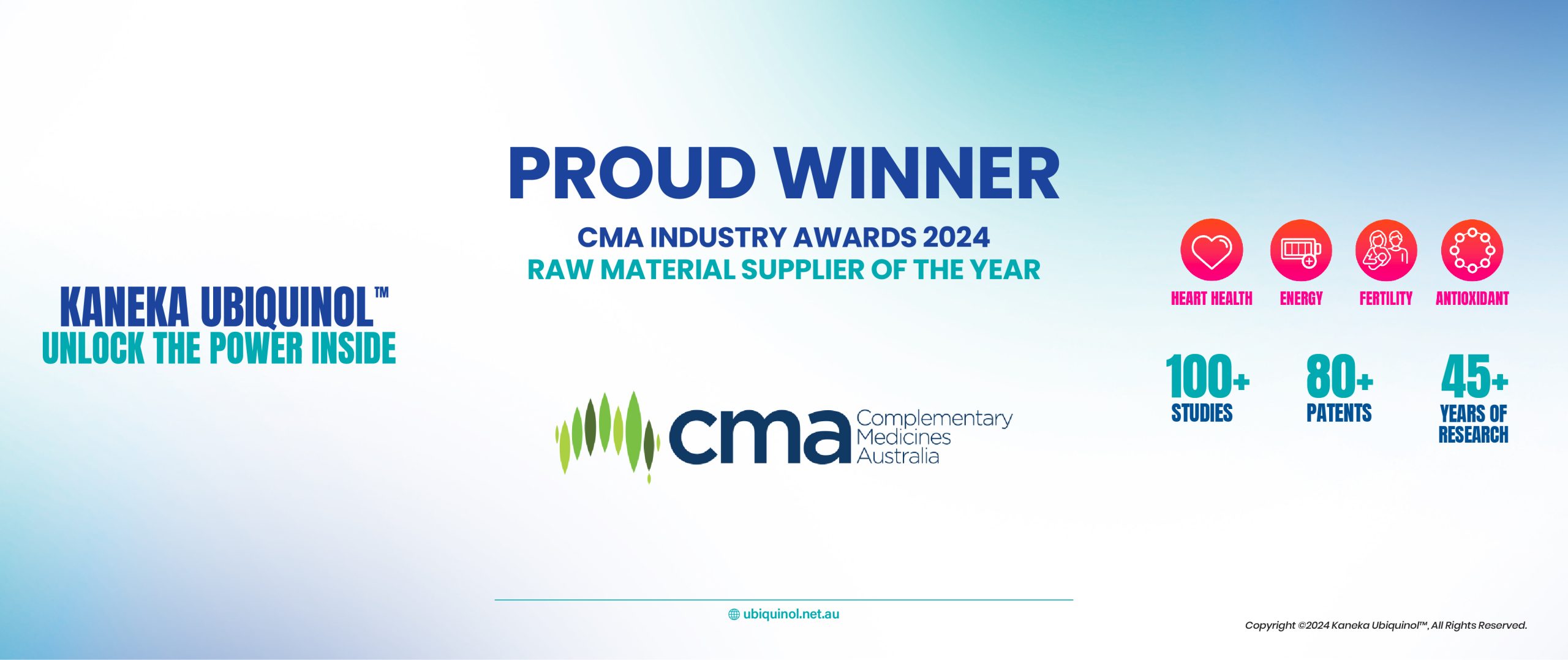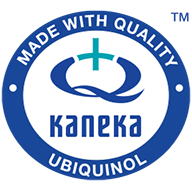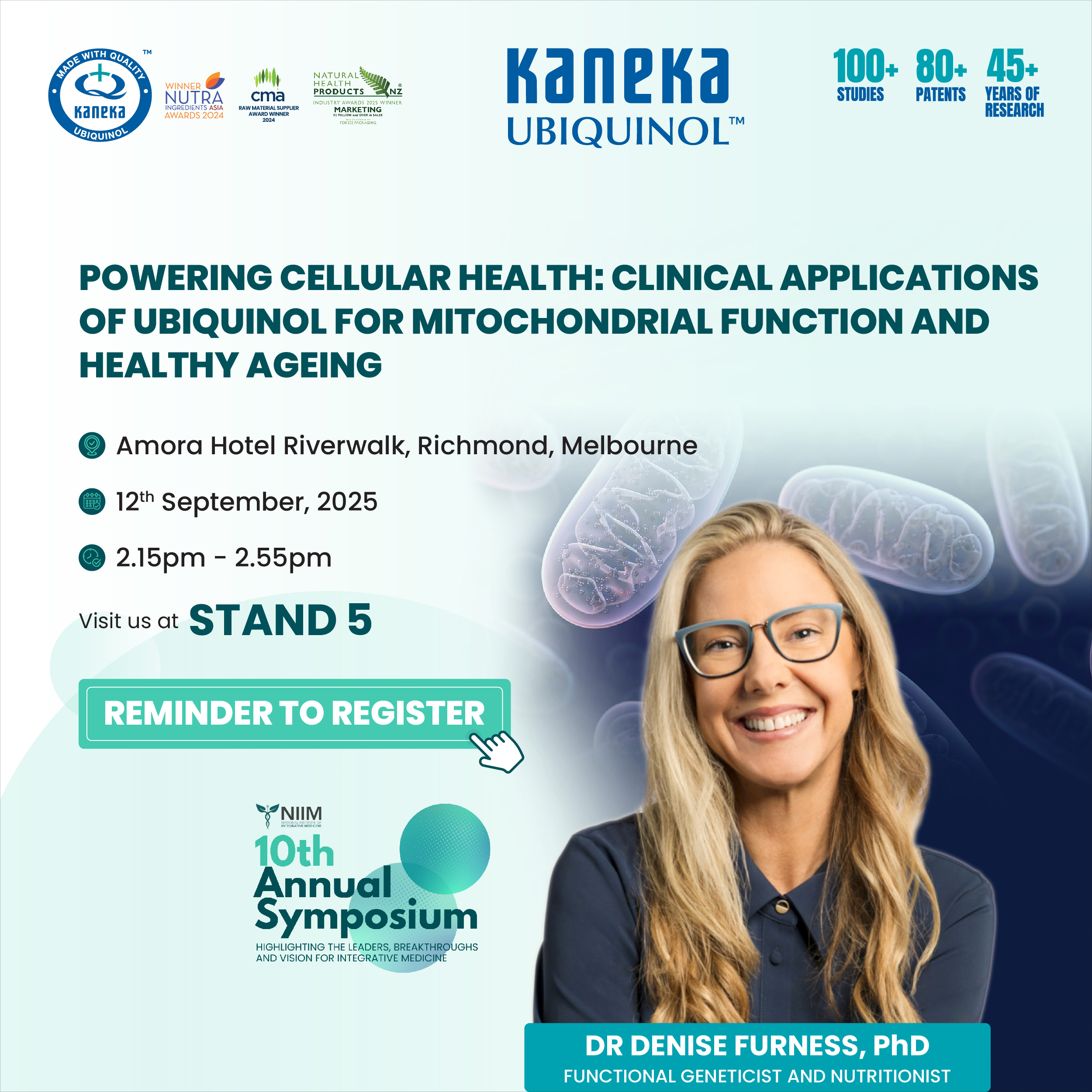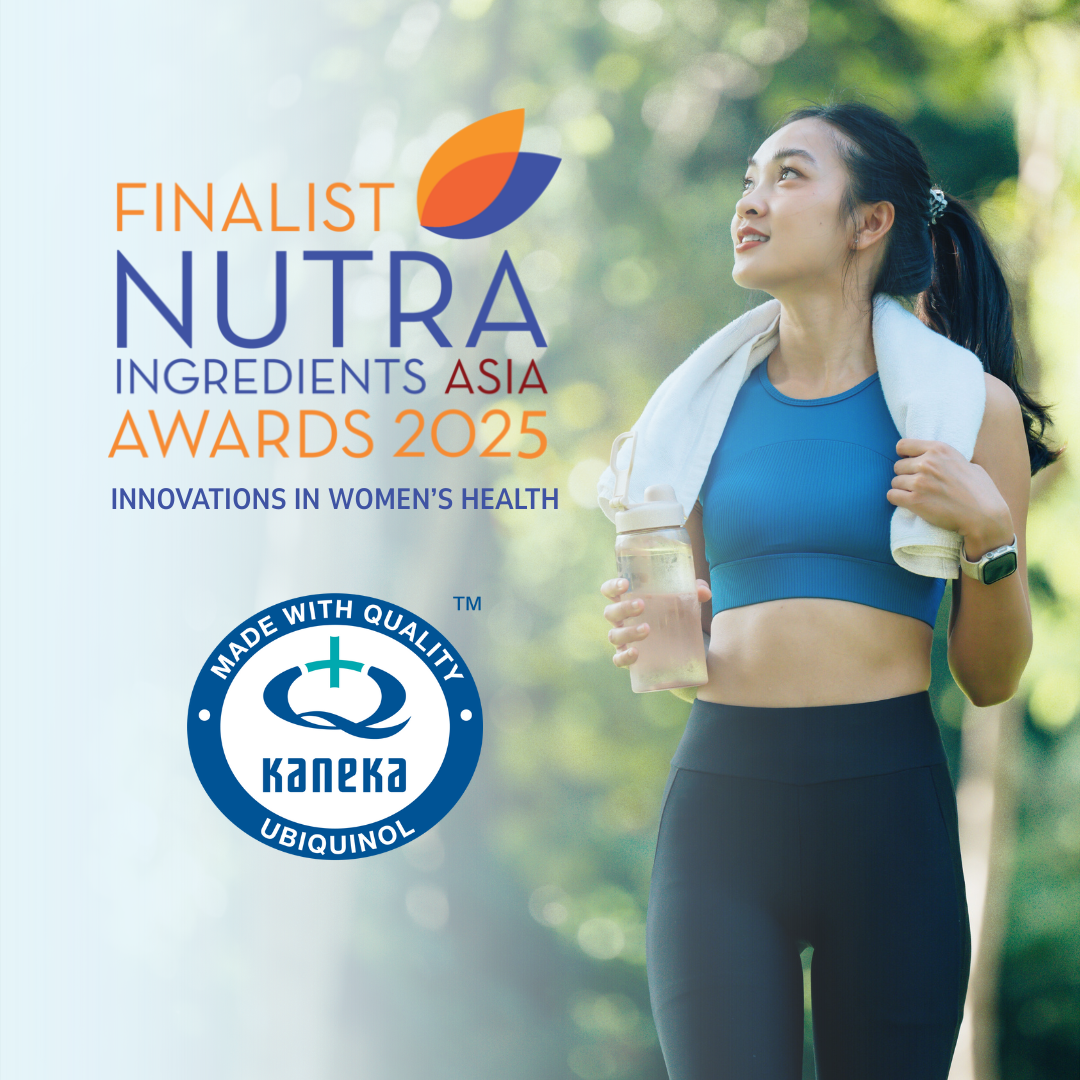
Ubiquinol: The Body’s Spark Plug
Mar 2021Recent Article
Why can ubiquinol be likened to the body’s spark plug?
Ubiquinol is the active form of coenzyme q10 (coq10), a fat-soluble antioxidant found naturally in every cell of the body[1]. Ubiquinol plays an important role in supporting cellular energy production, helping support all of our major organs with the energy they need to function at their best1.
How do cells produce energy?
A small part of the human cell, called the mitochondria, is home for the synthesis of Adenosine Triphosphate (ATP)[2]. Mitochondria convert chemical energy from the food we eat into an energy form that the cell can use[3]. This process is called oxidative phosphorylation3.
What is ATP?
In our cells, adenosine triphosphate (ATP), a compound with high potential energy, works as an important supporter of chemical energy2. The energy to synthesize ATP molecules may be obtained from complex fuel molecules[4]. The human body uses three types of molecules to yield the necessary energy to drive ATP synthesis: fats, proteins, and carbohydrates4.
How may Ubiquinol help?
One of the many health benefits of Ubiquinol is that it helps support the energy production levels in our cells1. Coq10 supports the synthetization of ATP in the mitochondria2. Ubiquinol, as the active form of coq10, may be more readily bioavailable[5]. This means that Ubiquinol may be more easily absorbed by the body than coq10, and may be more available to help support the body’s natural energy production levels5.
As a powerful antioxidant, ubiquinol also may help to relieve the effects of free radicals and long-term oxidative stress on the body[6]. Ubiquinol also supports cardiovascular health by helping support the heart with the energy it requires, and also by supporting healthy cholesterol levels in healthy adults1.
Seek advice from a healthcare practitioner to determine if supplementation is right for you. Always read the label.
[1] Saini, R. (2011). Coenzyme Q10: The essential nutrient. J Pharm Bioallied Sci, 3(3), 466-467. < http://www.peirsoncenter.com/uploads/6/0/5/5/6055321/coenzyme_q10__the_essential_nutrient.pdf >
[2] Mendelsohn, B. A., Bennett, N. K., Darch, M. A., Yu, K., Nguyen, M. K., Pucciarelli, D., … & Nakamura, K. (2018). A high-throughput screen of real-time ATP levels in individual cells reveals mechanisms of energy failure. PLoS biology, 16(8), e2004624. < https://journals.plos.org/plosbiology/article?id=10.1371/journal.pbio.2004624 >
[3] Boyer, P.D., Chance, B., Ernster, L., Mitchell, P., Racker, E. and Slater, E.C., 1977. Oxidative phosphorylation and photophosphorylation. Annual review of biochemistry, 46(1), pp.955-966.
[4] Senior, A.E., Nadanaciva, S. and Weber, J., 2002. The molecular mechanism of ATP synthesis by F1F0-ATP synthase. Biochimica et Biophysica Acta (BBA)-Bioenergetics, 1553(3), pp.188-211.
[5] Zhang, Y., Liu, J., Chen, X.Q. and Chen, C.Y.O., 2018. Ubiquinol is superior to ubiquinone to enhance Coenzyme Q10 status in older men. Food & function, 9(11), pp.5653-5659.
[6] Kuhn, M. A. (2003). Oxygen Free Radicals and Antioxidants: An overview of how antioxidants protect the body from disease. AJN The American Journal of Nursing, 103(4), 58-62. < https://journals.lww.com/ajnonline/Fulltext/ >
You can share this by:
Keep up-to-date with Ubiquinol News
Ubiquinol Headlines

Ubiquinol and Healthy Ageing: A Conversation with Dr Denise Furness on the House of Wellness Radio
Jun 2025Category: Ageing, Antioxidants, Broadcast, Energy, Fatigue, Health, healthy ageing, In The News, Mitochondrial health, Ubiquinol, wellnessRead More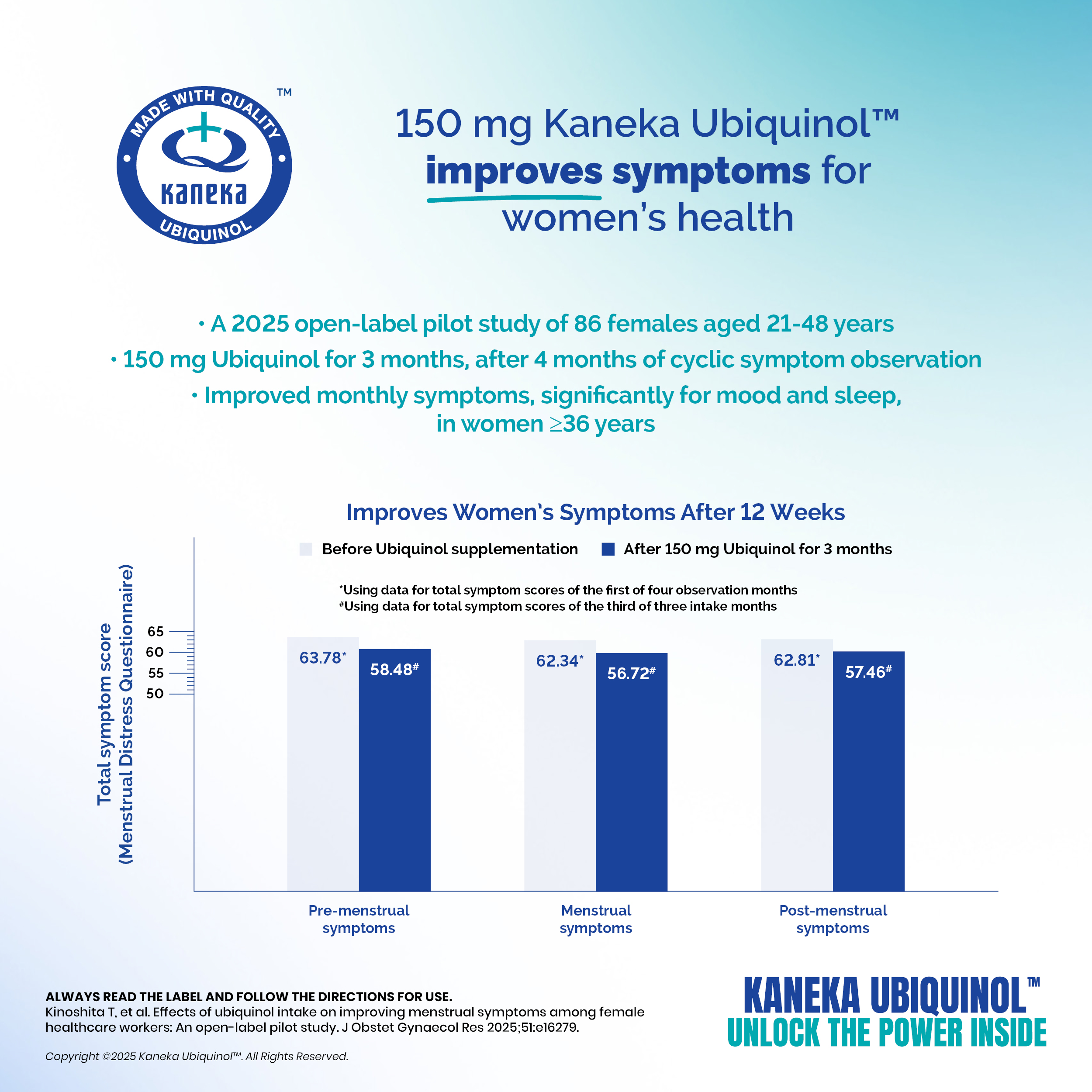
Kaneka Ubiquinol™ for Relief of Women’s Symptoms
May 2025Category: Ageing, Fertility, Menopause, Ubiquinol, wellness, Women's HealthRead More
Mitochondrial Health in Women’s Wellbeing: Key Insights from CMA Innovation Day 2025
May 2025Category: Antioxidants, Conferences, Fertility, Menopause, Ubiquinol, wellness, Women's HealthRead More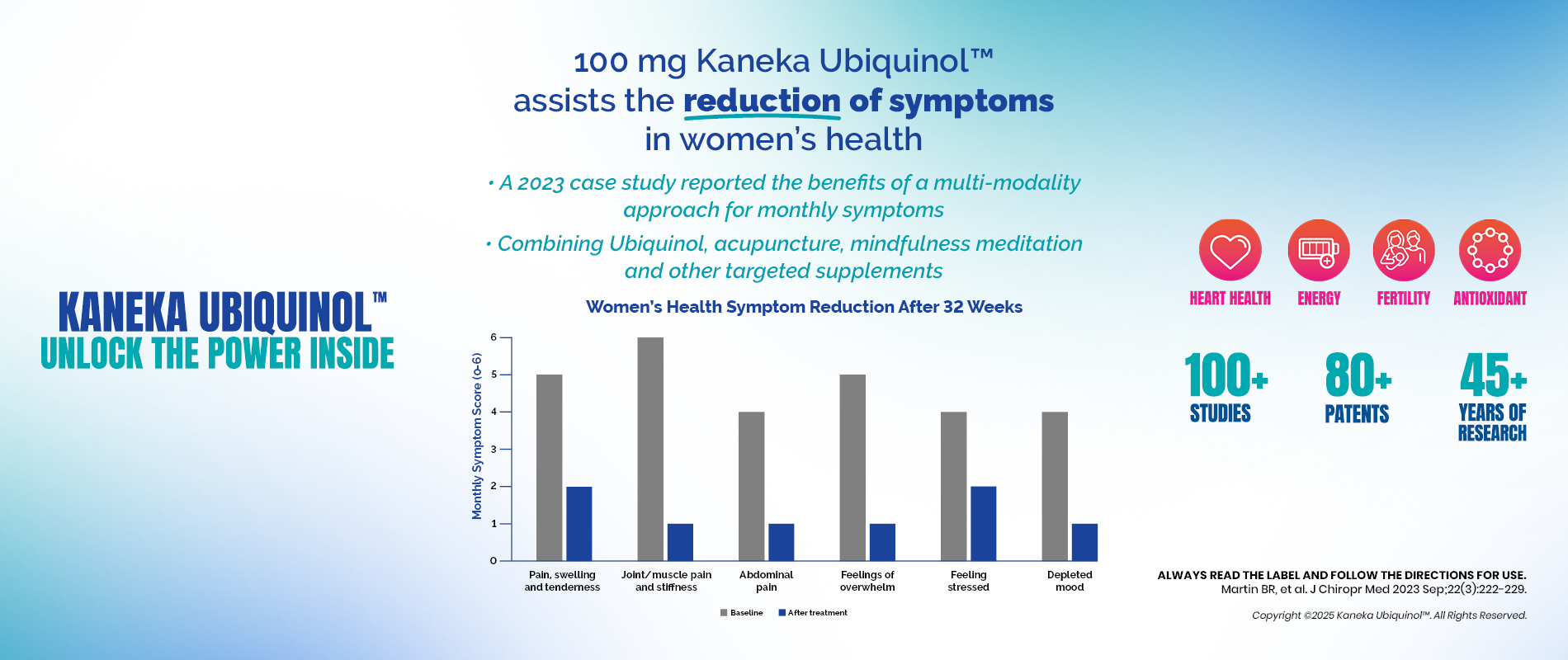
Ubiquinol for Women’s Health
Apr 2025Category: Ageing, Antioxidants, Fertility, Kaneka, Mitochondrial health, Ubiquinol, wellness, Women's HealthRead More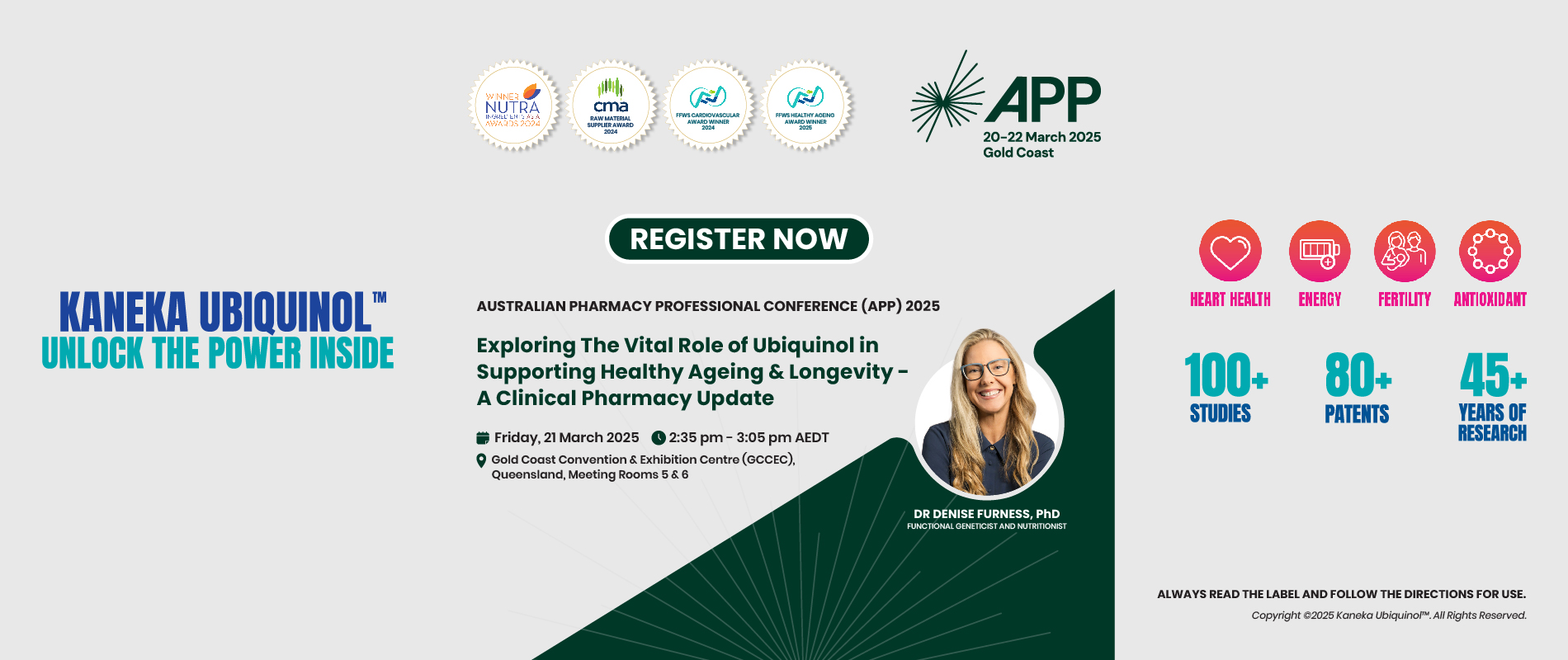
Kaneka Ubiquinol™ at APP 2025: Advancing Healthy Ageing & Longevity
Mar 2025Category: Ageing, Antioxidants, APP, Conference, Conferences, Energy, Fatigue, Health, Health Industry, healthy ageing, Kaneka, Mitochondrial health, Nutrition, UbiquinolRead More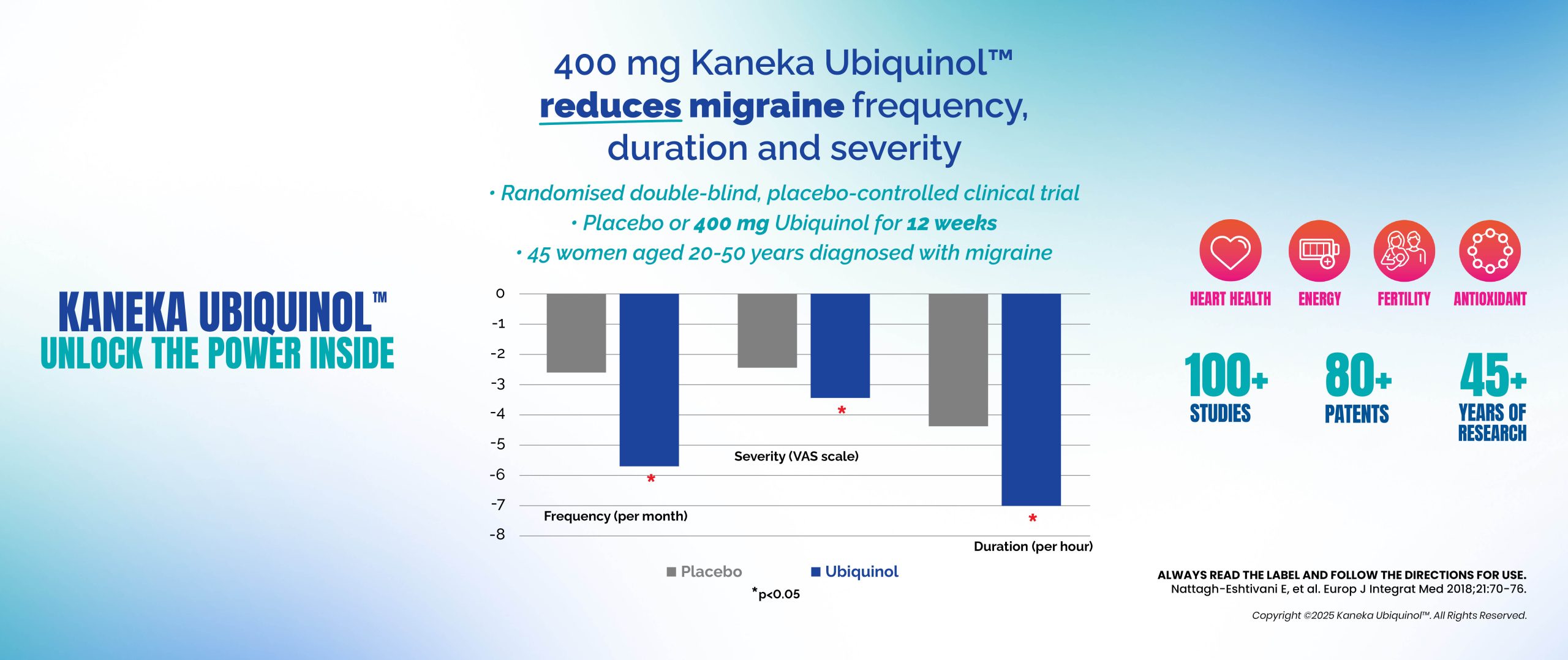
Ubiquinol: Supporting Migraine Relief Through Cellular Energy
Jan 2025Category: Antioxidants, complementary medicine, Energy, Fatigue, Health, Health Industry, healthy ageing, Kaneka, Mitochondrial health, Nutrition, Stress, Ubiquinol, Vitamins, wellnessRead More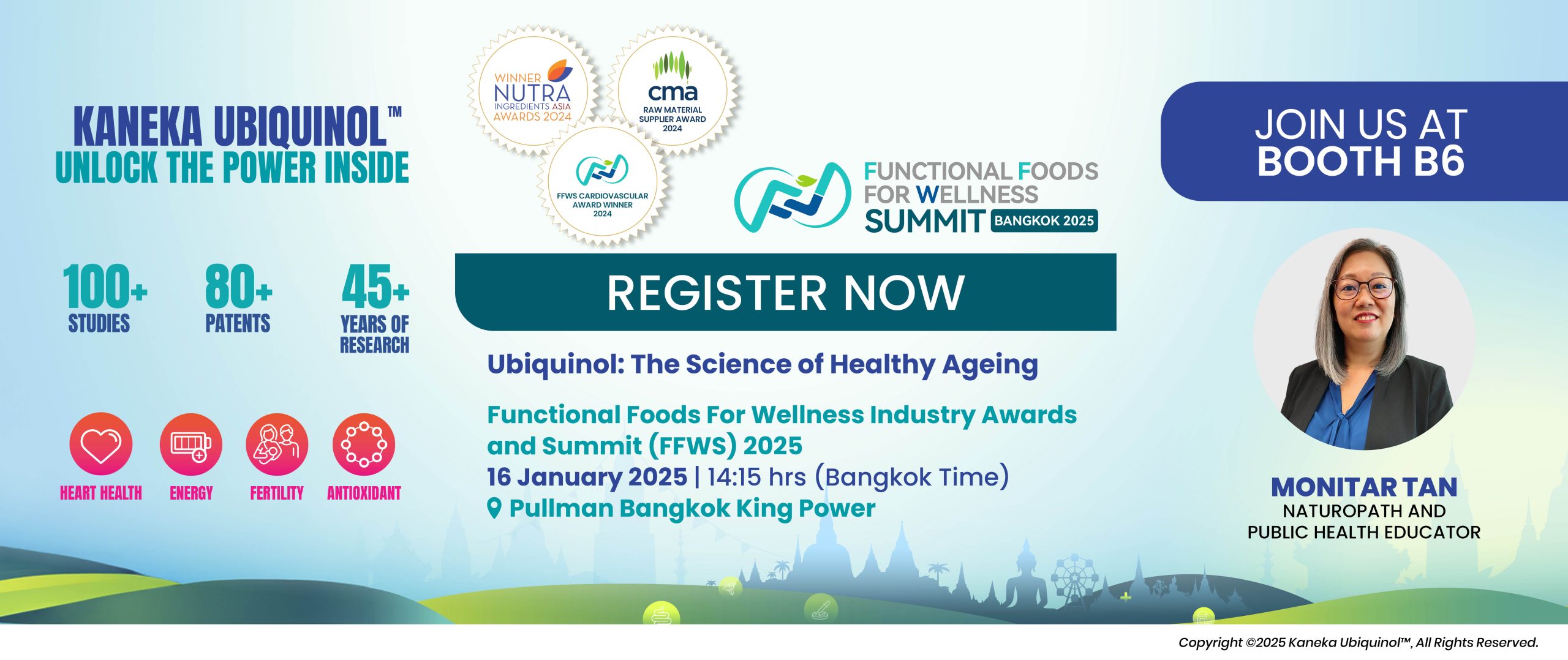
Kaneka Ubiquinol™ at Functional Foods for Wellness Industry Awards and Summit, #FFWS2025
Jan 2025Category: Ageing, Antioxidants, Awards, cardiovascular health, Conference, Conferences, Energy, Fatigue, FFWS2025, Health, Health Industry, healthy ageing, Kaneka, Menopause, Mitochondrial health, Nutrition, Ubiquinol, VitaminsRead More